
10 years after his passing, Tony Gwynn's fingerprints are still everywhere

SAN DIEGO -- Parked at a gas station somewhere near Lakewood, N.J., a frustrated Quintin Berry could not, for the life of him, figure out why he couldn’t hit the changeup. Playing in the early months of his first full professional season, Berry decided to give his former college coach a call. Tony Gwynn answered. He always did.
It was 2007. Minor League video wasn't readily available. Gwynn, the head coach at San Diego State, had not seen a single at-bat Berry had taken.
"I remember him telling me, 'Here's what's going on, here's why you're struggling with changeups,'" Berry recalled. "And it was exactly it. I didn't tell him. He hadn't seen anything. He knew exactly what it was. He knew who I am, what I was going through, and he's there talking to me about it for 30-45 minutes -- and I know he's got other stuff going on himself."
Berry -- who remembers being informed by Gwynn that he was “leaking out over his front foot and rolling over, not allowing the ball to travel” -- would make the appropriate adjustments. He’d finish that season hitting .312 and eventually go on to a five-year big league career. Now, he coaches first base for the Milwaukee Brewers.
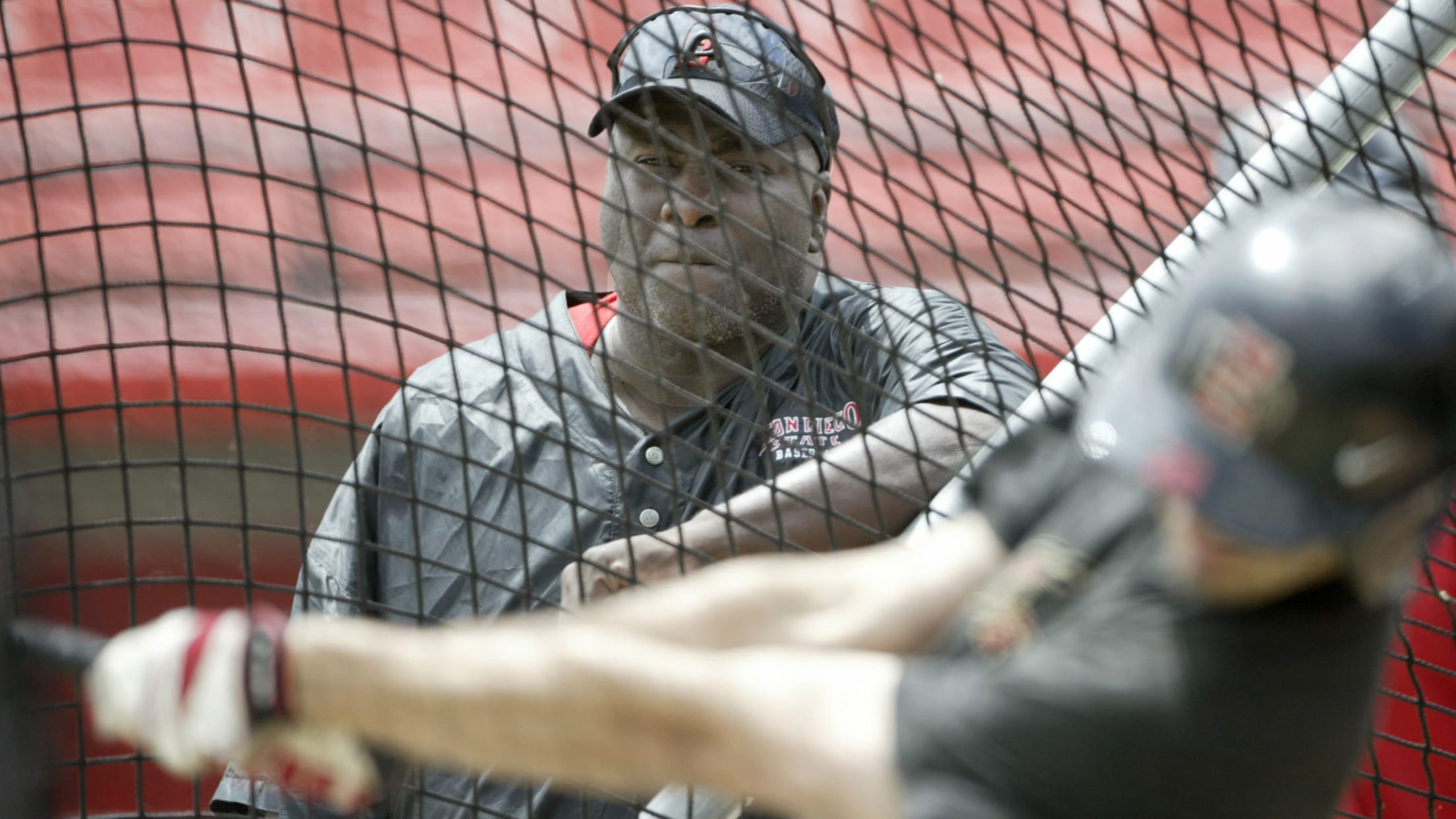
Two years later, a young
When the two met, Gwynn was unaware of Musgrove’s challenges at home. But he was well aware that Musgrove would be ineligible for SDSU, because his grades had dipped.
"My dad was pretty sick, and I wasn't really focusing on school much -- I was spending time at the hospital, and my grades fell,” Musgrove recalled. “One of the first talks we had was about me being able to keep my grades up. He didn't know about the stuff with my dad.
"In a moment where I figured he would push me away, he pulled me in closer and supported me through that. He told me there was a spot for me. I needed to take care of the family first. But the grades were a part of that. He stressed that, no matter where you are in life, there's things you just have to do. ... It was a big moment for me at a very crucial time in my life."
Musgrove got those grades up and became eligible. He would forego college when he was drafted by the Blue Jays, and he has since gone on to a nine-year career, in which he's spent the past four seasons starring for his hometown Padres. Mark Musgrove watched his son throw the first no-hitter in the history of the franchise he grew up rooting for.
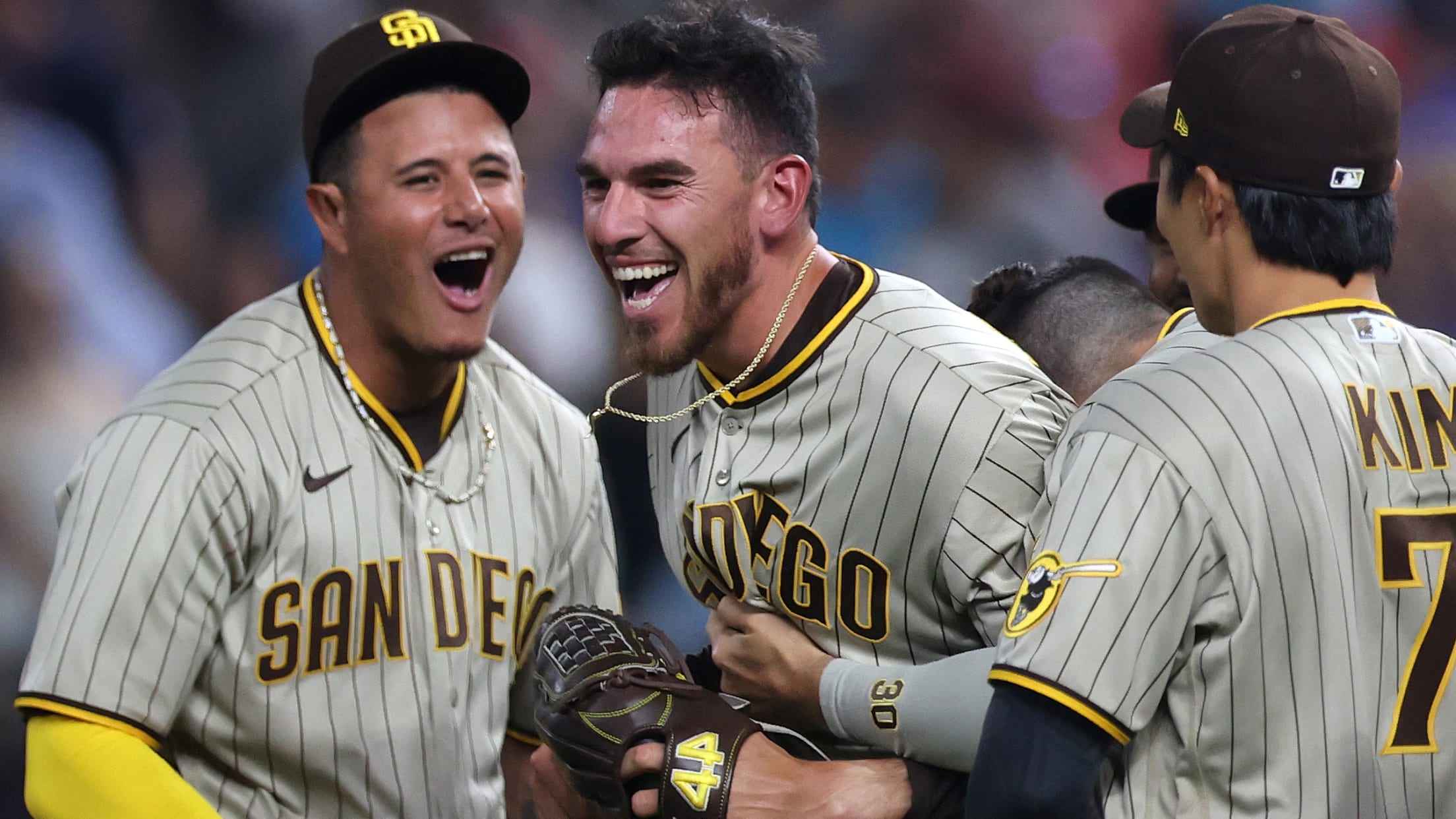
This Sunday will mark 10 years since Gwynn's tragic passing from salivary gland cancer. Musgrove and Berry are only two of the countless players and coaches directly impacted by Gwynn. Even more have been impacted indirectly. Take one glance across the current landscape of the sport, and Gwynn's fingerprints are everywhere -- from his revolutionary approach to hitting, to the players he taught, to the kindness he exuded. It’s everywhere.
Gwynn, the hitting 'pioneer'
When
Arraez, of course, has drawn the most obvious comparisons to Gwynn. His .326 career batting average is the highest mark in the Majors since Gwynn retired in 2001 as a career .338 hitter. One of Arraez's first missions after getting settled in San Diego was to visit the Tony Gwynn statue at Petco Park. Accompanied by Tony Gwynn Jr., the two made the trek one afternoon in late May. Arraez was awed.
"An amazing hitter," said Arraez, 27, who is too young to recall ever watching Gwynn play. "He loved the people, tried to help people. That's why so many people love him."
There obviously aren't many hitters like Arraez in the modern game. There certainly aren't any hitters truly like Gwynn. But Gwynn's impact on hitting remains as prevalent as ever.
Watch any game on any day. After a hitter takes an at-bat, you might see him retreat to the dugout to watch video on a tablet. Gwynn was doing that before anybody else, using VHS tapes in the 1980s.
"I want to use the right words, because this isn't a knock on the older players," said former big league pitcher Mark Grant, Gwynn's teammate with the Padres from 1987-90, now the color commentator on Padres TV broadcasts. "It's not that they didn't care. But there's just more preparation nowadays and more tools.
"As a pitcher back in the day, you'd pick up the newspaper and go, 'I'm facing the Pirates. Oh, Parker was 3-for-4 with a double and a homer -- better watch out for him.’ Now it's about hot zones and watching video. [Gwynn] was doing all that. He was so ahead of the curve. He was a pioneer."
A's manager Mark Kotsay, whose rookie season with the Padres overlapped with Gwynn's final season, uses the same word.
"I have great memories of watching him watch video on the plane, with his little VHS tape and his recorder that would flip up," Kotsay said. "You're talking about a pioneer in terms of studying pitchers, studying tendencies, utilizing what I would call data."
He was so ahead of the curve. He was a pioneer.
Mark Grant
Indeed, Gwynn spent thousands of his own dollars to furnish a video room at Jack Murphy Stadium. It was roughly the size of a large walk-in closet, Gwynn Jr. recalled. Not coincidentally, the room was located directly around the corner from Gwynn's locker. May as well have been an extension of it.
"Recent years, you're seeing a guy like Arraez, in terms of [Gwynn’s] style of play," said Gwynn Jr., an analyst on the Padres' radio and TV broadcasts. "But I think the biggest impact my dad has on this game is probably video. He was the first guy using video regularly for himself. Then that expanded to his team. Then that expanded to the first video equipment room where you could go in, sit down, [watch video]. ... Now, there's not a team that doesn't have a video room."
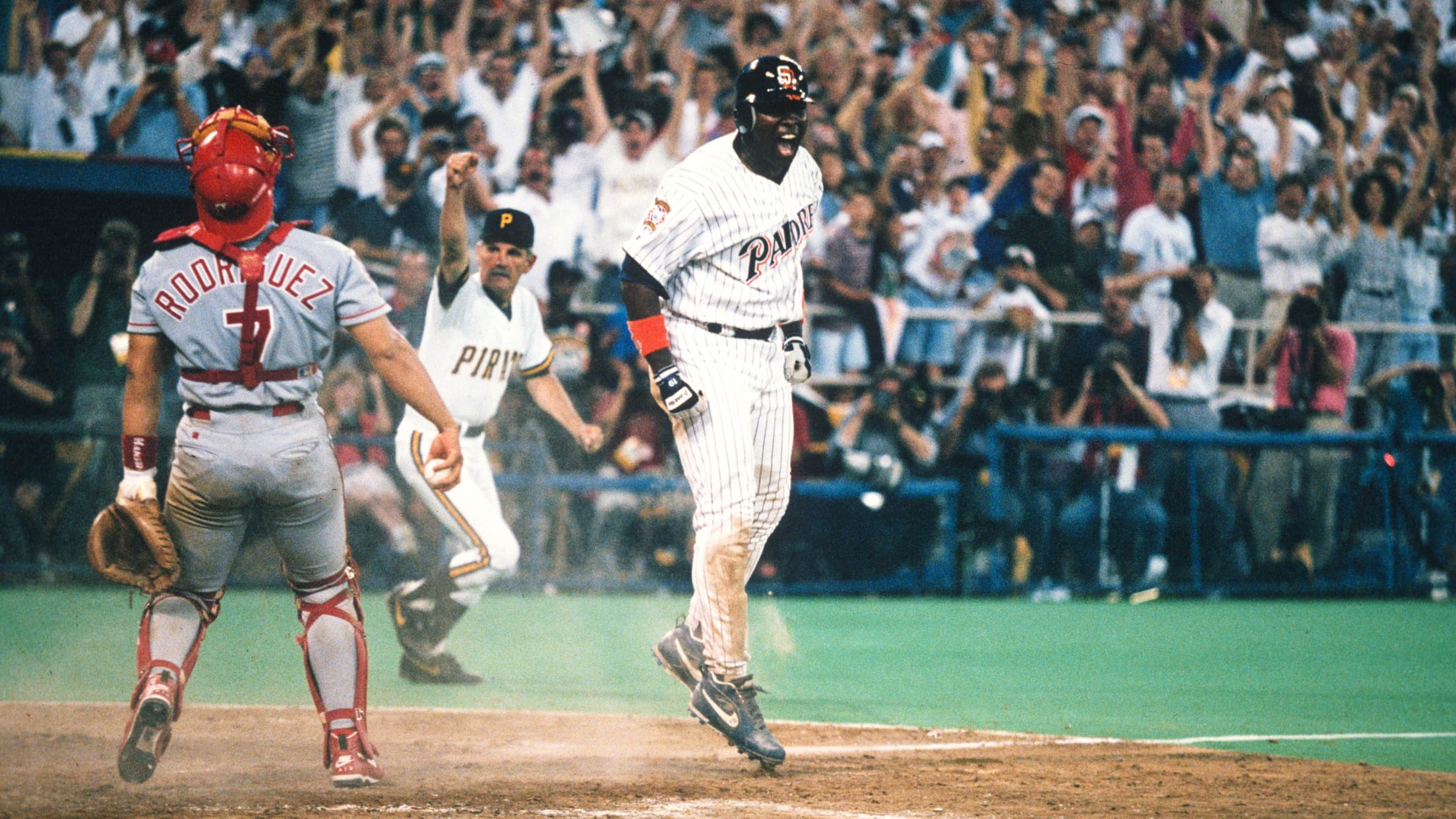
Then a kid, Gwynn Jr. remembers the video room as tiny and dusty, full of VHS tapes and devices that would slow down and speed up swings. Gwynn Sr. spent hours there. On the road, that video wasn't always accessible, because his team was at the mercy of the ballpark's cameras. So Gwynn often asked his wife to tape his swings. He would watch them back later that night.
And while use of video might be Gwynn's biggest pioneering achievement -- his understanding of that video was even more ahead of his time. Gwynn was presented with a blank canvas for how to use this new technology. He did it in such a way that hitters still struggle with, even three decades later.
"The problem with video today is that guys overthink and don't necessarily know what they're looking at when they look at video,” Berry said. “He always knew exactly what it was that he was looking for, the keys and everything. Nobody was more in tune with their own swing than Tony was. … Seeing guys trying to do that, get more in tune with their swings is awesome. It just changed the game. Video changed the game. And he was a revolutionary."
Gwynn, the teacher
A freshman at San Diego State,
"After every intra-squad, every game, anything where we had live at-bats, we had to stop by his office after that practice or game and get a DVD with our swings on it," recalled France, now the Mariners’ first baseman. "Yes. A DVD. He would burn it off of his computer, give it to us in a little slip, and he expected us to watch it.
"He would quiz us on it and ask us questions about it. And by the end of my three years there I had 300 DVDs. ... You didn't realize how important it was as a 17-, 18-year-old kid, how breaking down the swing can help you out so much."
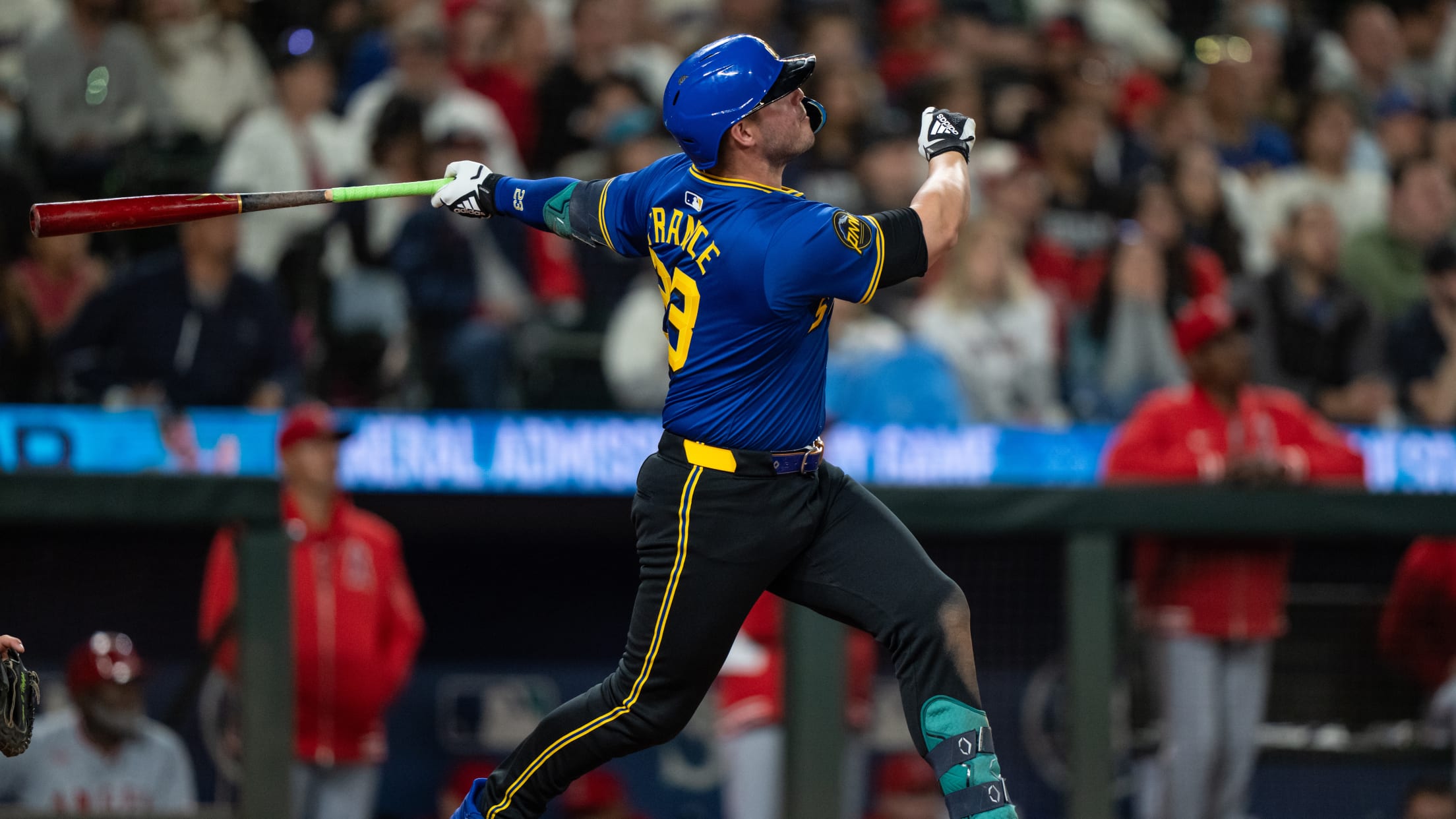
Gwynn, of course, realized this better than anybody else. It was his mission to impart that wisdom on the players who played for him. But while Gwynn typically had the answers, he didn't give them away easily.
"He wasn't somebody that just pushed stuff down your throat," Berry recalled. "He was more my style. He maybe wasn't what most college coaches are. He was: If you wanted anything, come to him. He was always there, ready to work.
"He would ask you your thoughts when you're swinging or hitting off the tee. He would say: What do you got on that? You'd give an answer. He would just nod his head, let you continue. He forced you to think deeper. Am I just saying what I'm supposed to be saying? Or do I really know what I'm talking about? He wanted you to come to your own answers and figure yourself out and learn about yourself, rather than just being told. I loved it, man."
Across his tenure at SDSU, Gwynn managed big leaguers like France, Berry, Stephen Strasburg and a handful of others. But perhaps the most telling sign was that Gwynn managed college baseball at all. This was a Hall of Famer who had accomplished just about everything a hitter could've set out to accomplish.
Yet there was more to teach, more lives to impact. Plenty of big leaguers return to the professional ranks to coach. Gwynn was the rare exception who felt he could make a bigger difference with college kids.
"It would've been sad if he didn't make that decision,” Berry said. “Because I just feel like what he did in his time there was way more than what he would've done at the professional level."
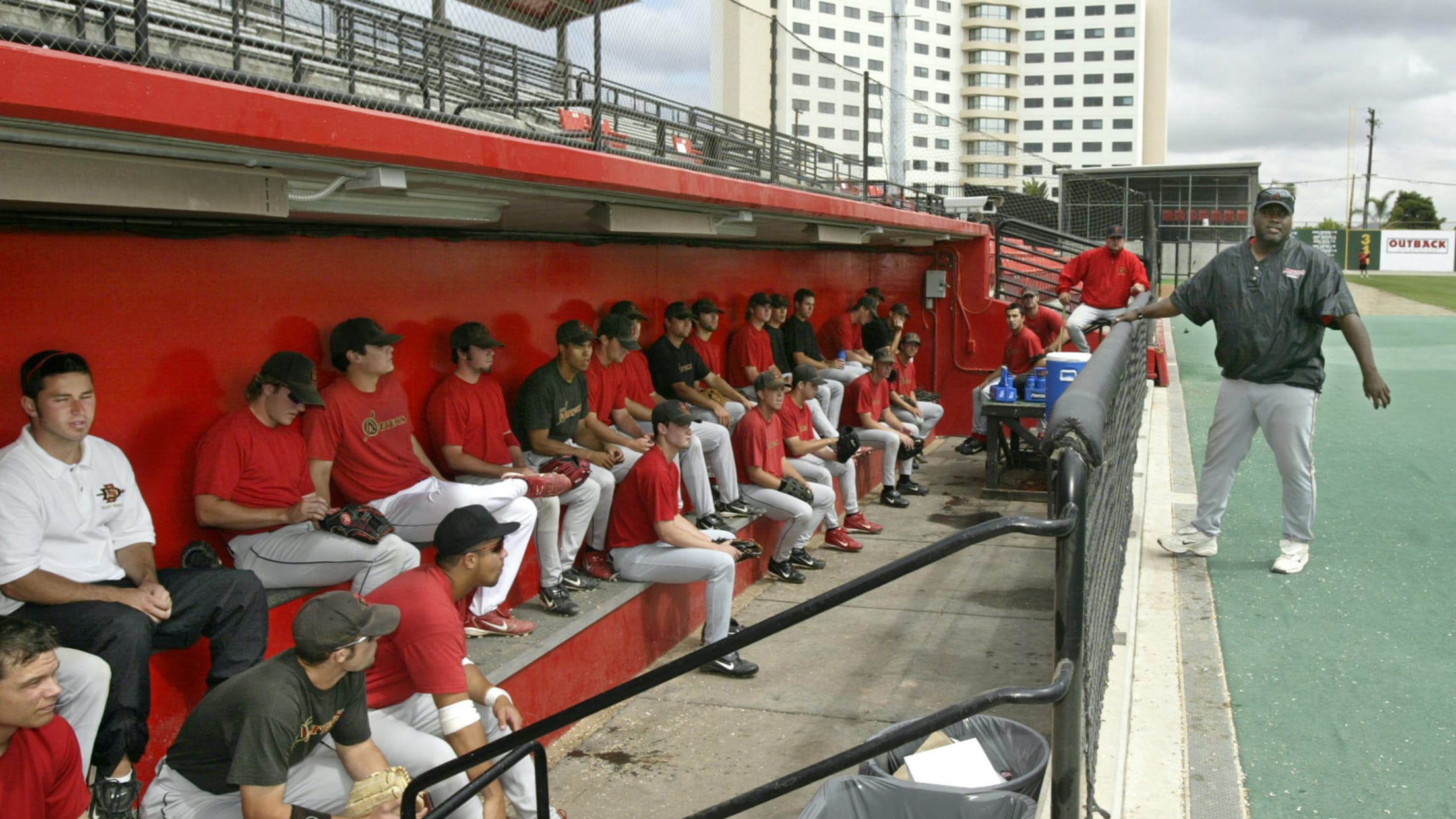
To be clear, Gwynn's teachings weren’t limited to the college ranks. As a veteran player, he impacted countless young players and never turned down a call for advice. To hear his former teammates tell it, Gwynn didn’t necessarily seek out the role of teacher while he was still playing.
But if you were a young player and needed help … had a question … wanted to watch film … wanted to break down swings …
Gwynn was there for it. Always. To this day, those Gwynn disciples are sprinkled throughout the sport -- from the coaching ranks, to the playing ranks, to the scouting ranks, to the broadcasting ranks.
“It was just about being a student of the game,” Kotsay said. “I remember, even in his last year, him being so meticulous about his preparation. That’s something that we stress a lot about: detail.”
Said France: “He just had high standards, high expectations. … He was Mr. Padre. I mean, he was the best of the best. So he expected that from you as well. And I think deep down, he knew we weren't going to be that good. But it came from a good place. It came from love. He just wanted to bring the best out in you, and he did a very good job of pulling that out of you.”
Added Grant: “He was just such a superstar. But yet, he didn't think he was. He always wanted to get better.”
He was Mr. Padre. ... He was the best of the best.
Ty France
Gwynn, the role model
A kid who grew up going to Padres games at Qualcomm Stadium, Musgrove watched Gwynn with a keen eye. This was Mr. Padre. This was one of the best hitters of his generation. This was a first-ballot Hall of Famer.
At the same time, Gwynn was extremely active in the community and with his foundation. He almost never turned down an autograph. He was the most popular athlete in the city’s history, and he was incredibly giving of his time. Musgrove took note.
“That really kickstarted it for me,” said Musgrove, who made a point to be active in the community during his time in Pittsburgh and Houston, but especially so since his return to San Diego. “Now, I feel like I have a passion, and I enjoy doing it. But when you’re young, you’re thinking of the money you’ll get and the excitement of being a pro ballplayer and all the cool things that come with it. You don’t think about the responsibility you have.
“He opened my eyes to that stuff. And the more I got into it, the more I started getting involved, the more I enjoyed it. I feel like that’s a big part of who I am now and what I want to be known as -- as somebody that helped out and helped make things better. The way he did.”
Gwynn’s impact wasn’t always so public either. It showed in his conversations with his former players long after they’d graduated.
“Who I am as a man, as a father, as a husband, I always say that I learned so much from him about who you can impact, who you can reach,” Berry said. “It might seem small. But it can go a really long way to those people. He was just one of the warmest dudes you could ever be around.”
This reporter experienced that first-hand as an intern covering his second Padres game in 2011. Derek Jeter had joined Gwynn in the 3,000-hit club. An e-mail came down from on high. We needed Gwynn’s reaction. Welcome to the job, go track down a Hall of Famer and interview him.
Whatever nerves I had, they were gone the minute I found Gwynn and asked the question. His eyes lit up. It was time to talk hitting. And he would always talk hitting. So he talked and talked and talked. He gave me everything I needed for that story. More importantly, he was giving of himself and his time. When two minutes would’ve sufficed, he gave 20 -- generous when generosity wasn’t required.
That’s a lesson that those who were impacted by Gwynn still cherish dearly in their day-to-day lives.
“In caring about the people who loved this game and come to support this game, [he] was an ambassador in that way,” Kotsay said. “Always down the line signing before games, making sure that [he] gave back.”

That legacy exists beyond the people who knew Gwynn directly. During the offseason, the Padres moved Gwynn’s statue to a more prominent place beyond right field, while unveiling the Tony Gwynn Terrace overlooking the outfield. It’s a pseudo-museum dedicated to Gwynn’s life and accomplishments. Arraez was clearly moved upon his visit.
“People love him because he helped people,” Arraez said. “Not only because he was a good hitter, good professional, good baseball player. … He was a guy that wanted to help people. I’d like to do that.”
Ten years after his death, Gwynn’s legacy on and off the field is as pronounced as ever -- in the innovations he made, in the people he mentored, in the warmth and class he emanated.
“For those who grew up here, it’s probably foreign to them to have somebody not doing those things,” Gwynn Jr. said. “Because that’s what they grew up seeing. … Those are the things that I think my dad would probably be most proud of if he was around. Seeing these guys conduct themselves the way they do.”
